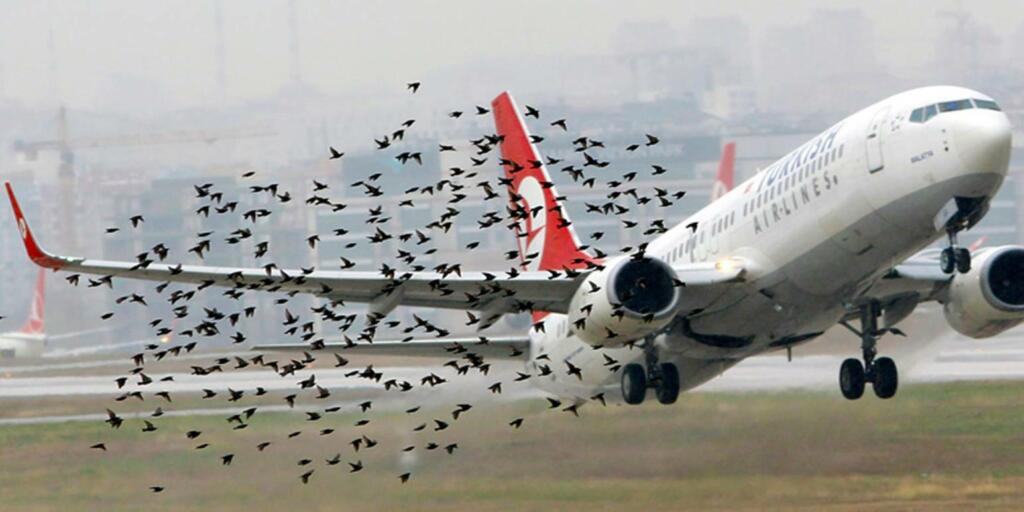Bird Strike is a collision between a flying bird and an aircraft. The collision often results in the failure of turbines ultimately compromising the flight safety conditions. Although, flights incur little damage but birds suffer fatal injuries during the collision. So, it becomes very important to tackle harmful collisions and secure safe flight conditions.
Increasing cases of Bird Strike
On Saturday, Yogi Adiynath’s helicopter had to make an emergency landing in Varanasi after a bird hit the helicopter on a route from Varanasi to Lucknow. District Magistrate of Varanasi, Kaushalraj Sharma, informing about the emergency landing said, “A bird hit the CM’s helicopter after it took off from Varanasi for Lucknow, after which it had to land here”.
#BREAKING | UP CM Yogi Adityanath's chopper had to make an emergency landing. This was after a bird hit the chopper.@pranshumisraa with more details.
Join the broadcast with @aayeshavarma pic.twitter.com/jEGdR4qN6y
— News18 (@CNNnews18) June 26, 2022
Earlier on June 19, similar emergency landings had taken place in Patna. The main cause of the emergency landing was Bird Strike. A Delhi- bound SpiceJet aircraft had to make an emergency landing in Patna as its left engine caught fire following a bird hit. Although all 185 passengers on board were safe but increasing incident like this raises many aircraft operational safety concerns
Delhi bound SpiceJet plane catches fire mid air. @PoulomiMSaha joins with latest updates. #PatnaAirport #EmergencyLanding #SpiceJet | @chaiti pic.twitter.com/20rTAqpqqb
— IndiaToday (@IndiaToday) June 19, 2022
Also Read: DGCA instructs Airlines to honor the martyred soldiers
Tackling the Bird Strike
According to a report, there were around 1453 suspected & confirmed wildlife strike incidents in 2021. To tackle the problem of bird strikes, the DGCA (Directorate General of Civil Aviation) has provided comprehensive guidelines for the airport authority to implement.
With the appointment of the Safety Manager, a dedicated wildlife management program should be implemented with the help of wildlife controllers in the airport’s vicinity area. He must maintain the surveillance of the wildlife activity on the aerodrome and advise the operations officers on the detected wildlife risks.
The wildlife controller should at least be competent in aviation wildlife management programs, applicable regulations, local wildlife ecology, wildlife observation, and identification on the aerodrome and where practicable, beyond the aerodrome boundary. He must be competent in on and off aerodrome habitat management, active risk reduction techniques, use of equipment for wildlife control and identification of wildlife strike remains.
Birds are usually attracted near airports due to life as food, water and shelter. The activities like agriculture fertilizing, ploughing, harvesting, Waste, garbage dumps, landfills, sewage treatment, lakes, ponds, water reservoirs and swamps provide food & water to the birds. Open terrains, grassland, warm pavements and roof surfaces, buildings, gutters, hangars, Aerodrome equipment, markers, coast, fish processing and lights which attract insects give shelter and food to these bird groups.
The prescribed guidelines of DGCA to bird control near airports are:
- Habitat management like fencing of the aerodrome, removal of bushes, removal of fruit trees, use of spikes, removal of cadavers, insects, closed garbage bins, protecting covers over water (balls, nets), steeper shores towards water surfaces, less attractive agriculture: beets, potatoes, chicory, turnips, long grass policy
- Human presence is the simplest method of dispersing wildlife.
- Gas cannons and other (mobile) noise makers remain effective methods, but variation is needed to avoid habituation. These devices have to be under control of the wildlife control unit.
- Kites, balloons, flags, scarecrows, reflective objects, and rotating spinners are cheap visual deterrents
- Pyrotechnic scaring cartridges / flare guns are within the limits imposed by its range more rapidly than birds. It enables control of the direction of movement of target flocks.
- Repellents are substances that animals may find unpleasant due to their taste, smell or touch.
- Green laser beam guns seem to be effective to chase water birds away from the water surfaces at the airport.
Also Read: Drunk pilots, a recurring menace!
To prevent bird hits, repelling sound energy, displacing sources of food should be inducted. These solutions should be widely implemented by airport authorities and the necessary actions to identify, manage and mitigate the risk of Bird Strike should be adopted. Further, Bird strike prevention should be an integral part of the aerodrome safety management system and comprehensive threat assessment procedure should be regularly taken.
Support TFI:
Support us to strengthen the ‘Right’ ideology of cultural nationalism by purchasing the best quality garments from TFI-STORE.COM.
